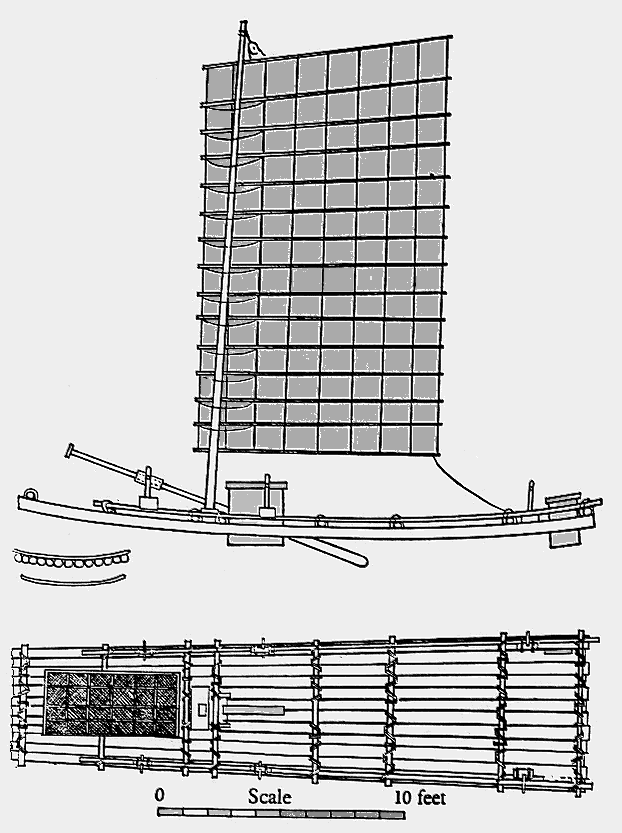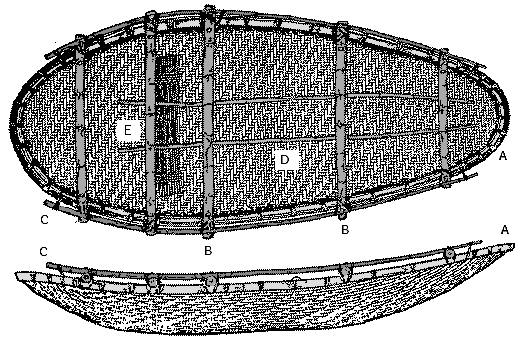![]() Back
to the Boats or to The
Cheap Page or to The Basket Boat
Back
to the Boats or to The
Cheap Page or to The Basket Boat

A publication from the US Department of Defense dating to the 1960s seems to indicate that these bamboo-skinned boats were used for alongshore fishing and may have been even longer than Hornell indicates below. Note how light the framework is. I've been told that these boats were painted with tar when it became readily available.
Hornell says:
"Although very light and easily carried by one man, they are able to carry several passengers together with a quantity of baggage. The dimensions of one measured by Nishimura [shown below] were as follows..."
- 12' 7" long -- 5' beam -- 26" draft (4m/1.6m/0.7m)
"Usually they run smaller, about 6' by 4' by about 10 inches
deep."

|
|
|---|---|
|
"Just as the earthenware tigari replaces the skin coracle in Bengal and the tub boat is its equivalent in China and Japan, so in Tongking (Tonkin), in Indo-China, a closely woven basket boat is the parallel substitute. This is a light, graceful craft made of inch-wide strips of split bamboo, closely woven into stiff matting, a material of great strength, resiliency and resistance to strain. In plan it is an elongated ovate form, the wider end being the stern. Both extremities are spoon-shaped like the fore end of a Norwegian pram and are rounded in horizontal outline. A gentle sheer toward each end carries stem and stern above the level of the midships gunwale, the stem rising the higher. [Emphasis and key letters on diagram by COD:] The bent-up sides of the bamboo body are embraced around their margin by several broad bands of split bamboo on each side and bound together into a stout cylinder with rattan strips to form a stout, continuous gunwale. "... the skin of the hull [is] daubed with a caulking mixture of cow dung and coconut oil (Nishimura, 1928, 36), periodically renewed. Strips of split bamboo are fitted over the floor to serve as dunnage and so keep cargo and passengers dry against moderate leakage." |
A
B
C
D
E |
![]() Back
to the Boats or to The
Cheap Page or to the Top.
Back
to the Boats or to The
Cheap Page or to the Top.
1.5 7/18/97
..